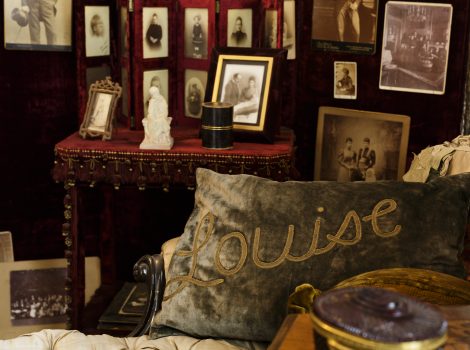The Dining Room
The Dining Room stands almost exactly as it did when Christian X and Queen Alexandrine lived in the palace from 1899 until their deaths in 1947 and 1952 respectively. This is true of the dining table and chairs, cabinet, as well as the lighting and the golden walls. The decorative plates hung on the walls were amongst Christian X and Queen Alexandrine’s wedding presents in 1898, which included a complete unique set from Royal Copenhagen with motifs from the town of Randers and the surrounding area – in memory of the King’s time as a young soldier in Randers.
On the window sills are marble busts of the Royal Couple, and the room’s furnishings are supplemented by various objects which are related to the Royal Family.
 Dansk
Dansk
 English
English
 Deutsch
Deutsch












